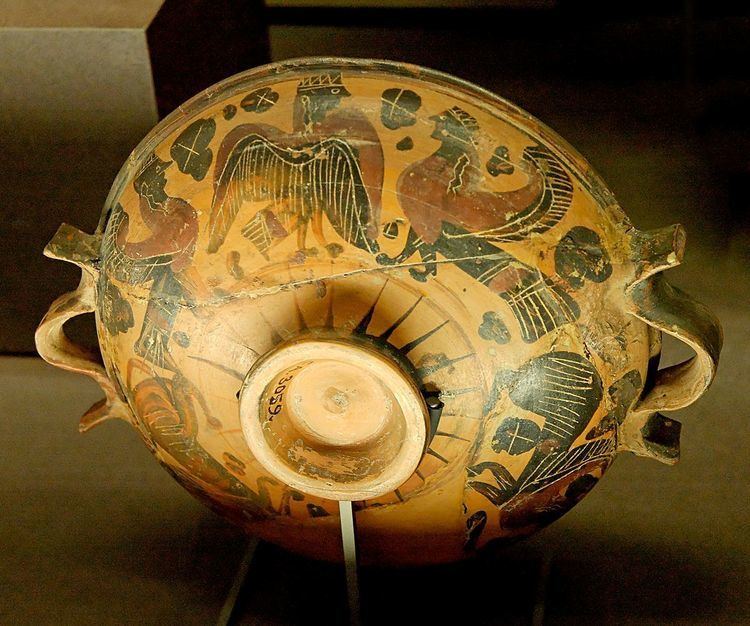 | ||
The Polos Painter was a vase painter of the Attic black-figure style. His works date to c. 575 to 565 BC.
The Polos Painter is considered to have a distinctive personal style, while only being of mediocre artistic talent. Stylistically, he resembles the earlier Ragusa Group, which was strongly influenced by Corinthian vase painting. He was very productive. Most of his vases were decorated with “degenerate animal friezes” (John Boardman). His conventional name is based on the cross-hatched polos crowns worn by the women, animals and sirens he painted. More than 100 known vases and fragments are ascribed to him. His works were widely spread across the Greek world, presumably among less discerning customers; they have been found from Athens and Attica via Southern Italy to Spain, the Cyrenaica, Egypt and Asia Minor. He decorated all vase shapes then current; but preferred plates and lekanes.
